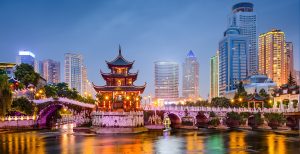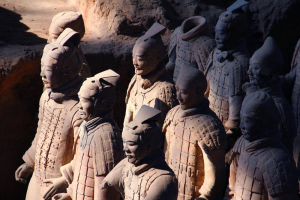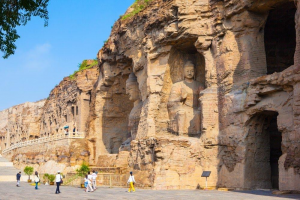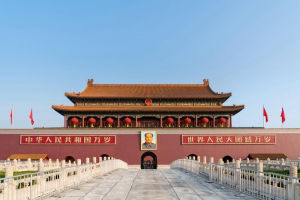
Destinations
China
The People’s Republic of China is the most populated country in the world. China has a ‘written history’ that goes back nearly four thousand years before the PRC. However, ruins dating back to about 6,000 years ago, on which ideographic drawings were found, were found. The origins of many inventions such as paper, gunpowder, compass and printing, which constitute the cornerstones of today’s civilization, are based on the Ancient Chinese civilization. In recent years, China has started to become one of the most important economic powers in the world. China’s influence in the region and in the world makes itself felt more in the economic field than in the military field. It is predicted that within 20 years, China will be the richest economy in the world.

The People’s Republic of China is a tourism paradise that arouses all kinds of interests, both culturally and geographically. Temples with a century-old history with red roofs, vast tea gardens, geographical richness such as the Yangtze River, the third widest river in the world, examples of the world’s most attractive beaches on the south coast, historical monuments such as the Historical Silk Road and the Chinese Wall starting from the city of Xian, unique artifacts and skyscrapers that are symbols of the modern world… All of them and much more create the tourism potential of the country that appeals to everyone. Beijing, the capital of China, is home to the country’s most important historical values mixed with legends.
Here are the must-see places
THE GREAT WALL OF CHINA

The Great Wall of China, which runs along the northwest of the country, is 8,851 kilometers in total, with parts of it falling into ruin. The Great Wall of China, whose construction began in 221 BC, was completed in 608 AD, that is, in approximately 800 years. It is thought that around 8,000 workers were employed to construct it. The thickness and height of the wall are constantly changing along the wall. The base is around 7 meters while the tops are around 6 meters. The height of the wall also varies mostly, with an average of around 10 meters. It is rumored that the Great Wall of China was built to protect the country from Turkish attacks and to prevent escapes from China. The Great Wall of China is considered by many to be the proof of what mankind can reveal in the face of fear. The historical building was included in the list of New Seven Wonders of the World on July 7, 2007. The Great Wall of China was also included in the world heritage list by UNESCO in 1987.
EARTH SOLDIERS

They are sculptures made of terracotta (terracotta) found in the tomb of Ghin Shi Huang, the first ruler of China, located in Shensi province. Statues from the early 2nd century BC were accidentally discovered by a farmer in 1974 in the Shian center of Shensi. Hundreds of thousands of people worked in the construction of the tomb, and it is predicted that there are still thousands of soldiers and war vehicles under the ground. Included in the UNESCO World Heritage List in 1987, the Earthen Soldiers are one of the historical places of China as unprecedented structures.
YUNGANG CAVES

Located in Datong, northern China, the Yungang Caves are a UNESCO World Heritage Site and are known as one of the finest works of early Chinese Buddhist Cave art. There are 5 main caves you can visit here, and each one has magnificent statues of Buddha. There are 51,000 Buddha statues in total.
TIANANMEN SQUARE

It is one of the historical squares of the People’s Republic of China. It was created in the 15th century. Although the region suffered heavy destruction as a result of natural disasters, it was restored in the middle of the 17th century during the years of the Ging Dynasty. It has been named as Tiananmen Square since the 1650s and covers an area of 440 thousand square meters. It is currently known as the largest urban square in the world. The square, which has many famous restaurants, cafes and other businesses, hosts various events and political events from time to time.
TEMPLE OF HEAVEN
It is a complex of religious buildings located in the southeast part of Beijing. Also visited by the Emperors of the Ming and Ging dynasties, the temple was built between 1406 and 1420 as a place of worship where the emperors talked to the god and made sacrifices to him. The circularly built structure is entirely wooden and no nails were used in its construction. The Temple of Heaven, decorated with different Chinese symbols, is a very impressive structure with its red columns and gold embroidered motifs. Symbolizing heaven on earth, the temple has been on the UNESCO World Heritage List since 1998.




